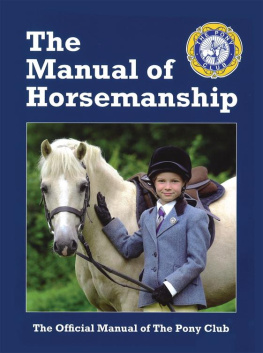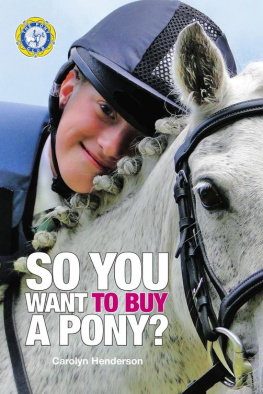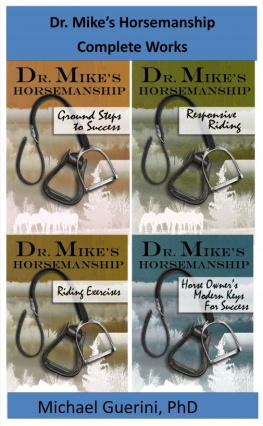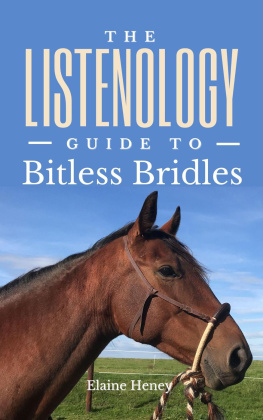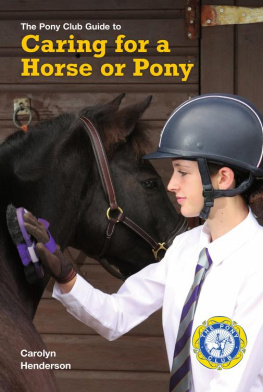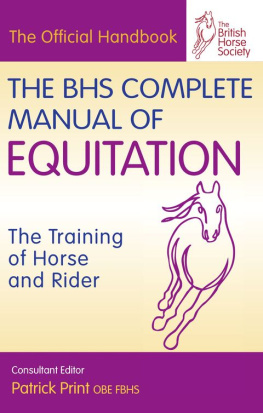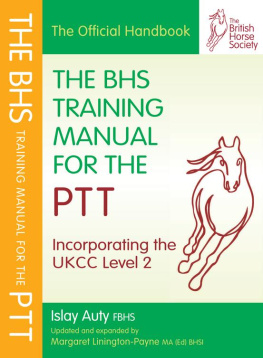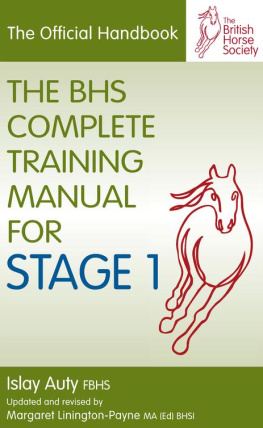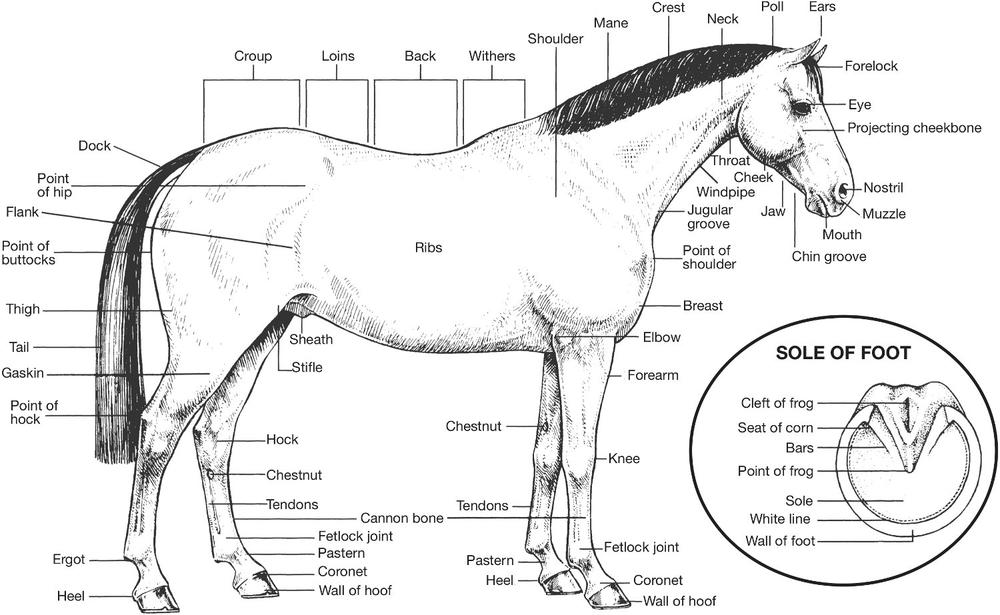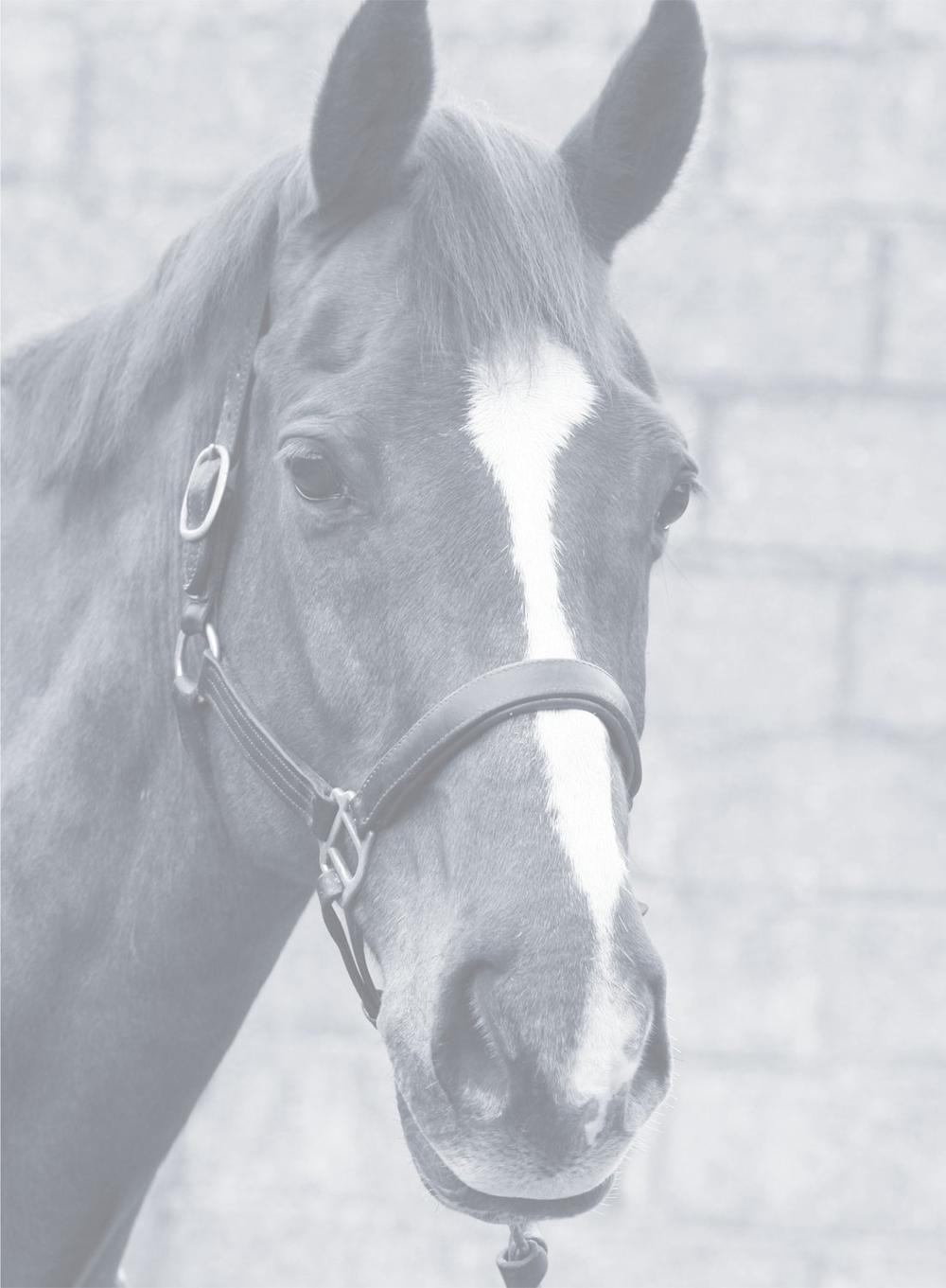Riding is one of the very few sports which can be enjoyed from early childhood to old age and at many different levels. At its simplest it provides a means of travelling from one place to another. At its most developed it is one of the supreme partnerships between man and animal. No matter how simple or how developed, even greater enjoyment can be achieved by the continuous process of learning. The purpose of The Manual of Horsemanship is to assist in this process.
The first part of the book covers all important aspects of horsemastership: bearing in mind that the performance of a horse for his rider is inextricably linked with his well-being and comfort. The later chapters are devoted to the art of horsemanship: encouraging riders to improve their skills and in so doing produce better horses.
We hope that the Manual will prove useful to riders of all ages, and that it will be particularly beneficial to young people who are acquiring a horse or pony for the first timeespecially those from families with no equestrian tradition or where there is no experienced older relation to advise in times of need.
In dealing with horses there is a right way and a wrong way of doing everything. Sometimes there are several right ways of doing the same thing. The Pony Clubs aim is to teach a right way which is safe for the horse and safe for the rider or handler.
Few people would deny the beauty and grace of the horse. Most riders come to realise his generosity and gentleness. Those who learn to be true horsemen discover with gratitude his willingness to please and serve. A bad or ungenerous horse is invariably the result of human lack of knowledge, understanding or ability.
For all readers of this book, whether Pony Club members or other like-minded people, there is a lifetime of discovery and pleasure ahead. Every horse or pony that you ride and look after is an individual, who will teach you something new. As your confidence and knowledge increase, your standard will improve. You will discover the satisfaction of producing a fit and healthy horse. Above all, you will discover the joy of skilful riding.
Contents
BREEDS
To be accepted officially as belonging to a specific breed, a horse must be recorded in the stud register of that breed, or must have the necessary qualifications to be so registered. If these qualifications are not met, the animal may be referred to as of the type: for example, New Forest type.
Some of the recognised British breeds of light horses and ponies are: Hackney, Arab, Anglo-Arab, Cleveland Bay, Irish Draught, Thoroughbred (horses); and Shetland, New Forest, Dartmoor, Exmoor, Dales, Fell, Highland, Welsh, Connemara (ponies). Stud Registers exist for all of these horse and pony breeds. (A Thoroughbred is an animal registered in the General Stud Book).
Terms Related to Breeds
| Half-bred | One parent is a Thoroughbred. |
| Anglo-Arab | A cross between a pure Arabian and a Thoroughbred. |
| Part-bred | A cross between one pure-bred parent and one which is not pure-bred. |
| Warm-blood | Of European origin; heavier than a Thoroughbred, but lighter than a heavy horse. Not a pure breed, but stud registers exist, mostly in Continental Europe but also in the UK (the British Sports Horse Register and British Warm Blood Society), the Americas, Australia, New Zealand and South Africa. Their purpose is to encourage the selective breeding of competition horses, particularly for dressage, showjumping and driving. |
| Light Horse | A general term usually used to refer to horses bred for riding. |
| Heavy Horse | Large, strong horses bred for agricultural purposes to pull hay carts, ploughs, etc. |
| Mule | A cross between a donkey stallion and a pony mare. (A jennet or hinny is the product of a pony stallion out of a female donkey.) |
TYPES
Hunters, hacks, polo ponies and cobs are types of horse, not breeds. This is because they lack fixed character. For example. the hunter is a horse used for hunting, and neither conformation, size, character nor colour bear any importance on this type.
COLOURS
The colour of a horse or pony is assessed by considering the colour of his coat and the colour of the points. The points are the muzzle, the tips of the ears, the mane, the tail and the extremities of the four legs.
| Black | A black horse is black in colour with black points. |
| Brown | A brown horse is dark brown or nearly black in colour with brown points. |
| Bay | A bay is brown-coloured with black points. Light, bright and dark are variations of the colour. |
| Bay-brown | Bay-brown is a term used for a horse that appears to conform partly but not exactly to bay or brown. |
| Chestnut | A chestnut is a ginger or reddish colour, usually with a similar mane and tail. Flaxen manes and tails should be described as such. Light, dark and liver chestnuts are variations of chestnut. |
| Grey | A grey has black and white hairs occurring throughout his coat. An iron grey horse is one on whom the black hairs are predominant. A dappled grey horse has light grey circular patches on a darker background. A flea-bitten grey is one on whom the dark hairs occur in tufts over most of his body, giving a speckled appearance. A light grey is one on whom white hairs predominate. A horse is never correctly described as a white horse. White is not a colour but a lack of pigmentation. |
| Dun | A dun varies from mouse-colour (blue dun) to golden (yellow dun). He generally has black points and may show either zebra marks on the limbs and/or a list or eel stripe, which is a dark line along the back. |
| Roan | A roan has white hairs throughout his coat. Variations are strawberry roan (chestnut coat), red roan (bay coat), blue roan (very dark bay, brown or black coat). |
| Piebald | A piebald has large irregular patches of black and white: i.e. like a magpie. |
| Skewbald | A skewbald has large irregular patches of white and any other colour except black. |
| Spotted Horses | Three different types of marking are recognised: |
| Leopardspots of any colour on a light or white coloured background. |
| Blanketanimals having a white rump on which are spots of any colour. |
| Snowflakewhite spots on a foundation of any colour. (Piebald or skewbald markings with any of the above are not acceptable to The Spotted Horse and Pony Society.) |
| Palomino | Palomino is a colour, not a breed. The body colour is golden, but (limited) variations of shade are allowed. The mane and tail are very lightalmost white. |

